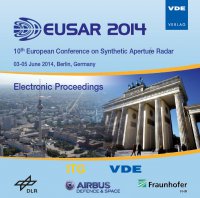COSMO SG, Spacecraft design and technological challenge
Conference: EUSAR 2014 - 10th European Conference on Synthetic Aperture Radar
06/03/2014 - 06/05/2014 at Berlin, Germany
Proceedings: EUSAR 2014
Pages: 4Language: englishTyp: PDF
Personal VDE Members are entitled to a 10% discount on this title
Authors:
Scorzafava, Edmondo (Agenzia Spaziale Italiana (ASI), Italy)
Monaci, Fabio (SGD-IV (MoD), Italy)
Zampolini Faustini, Enrico; L'Abbate, Michelangelo; Capece, Pasquale; Lumaca, Francesco; Campolo, Giovanni; Panetti, Aniceto; Spera, Gerardo; Pavia, Patrizio; Occhigrossi, Silvia; Lunardini, Simone; Anania, Marco; Venturini, Roberto; Spadoni, Francesco; Roscigno, Rita; Bagaglini, Flaviano (Thales Alenia Space Italia (TASI), Italy)
Abstract:
A brand-new design of the Synthetic Aperture Radar (SAR) instrument has been conceived, capable to make the space resolution of the “narrow field images” finer than COSMO-SkyMed First Generation satellites (CSK), while providing multi-polarization. The technologies necessary to sustain improved performances interest all SAR payload elements, realizing completely renewed design of SAR central electronics and active phased array antenna with respect to CSK. A renewed Payload Data Handling and Transmission (PDHT) design significantly improves the performances of the PDHT currently in use in CSK, in terms of on-board data storage capacity (doubled), space-to-ground data transmission throughput (doubled), data reception rate from SAR. The technology innovations relate to all composing elements of PDHT, such as on-board memory cells, command & control software, data encryption, modulation scheme, communication devices. The Satellite Platform has been enhanced with respect to CSK, in terms of augmented electrical power (necessary to cope with the increased peak power required by the payload), an Avionics Subsystem (AVS) new state-of-the-art design (enhanced sensors technology and a very high satellite agility), a new transponder with enhanced data rates and an increased propulsion fuel tank capacity for an extended operative lifetime. This paper describes the COSMO Second Generation challenging technologies and design put in place in the LEO SAR Satellites context.


